In San Diego, attached Accessory Dwelling Units (ADUs) are revolutionizing housing, offering homeowners an array of space solutions.
These attached ADU examples present diverse opportunities, from guest accommodations and rental units to home offices and in-law suites.
The city’s soaring cost of living has fueled the rise of attached ADUs, providing affordable housing without compromising prime locations.
Whether you’re a homeowner seeking to maximize your property or an investor in pursuit of rental income, exploring attached ADU examples is a wise endeavor.
By optimizing existing structures, San Diego residents can enhance property value and create versatile living spaces tailored to their needs. This article delves into various attached ADU examples in San Diego, showcasing distinctive designs, layouts, and architectural styles.
From contemporary and streamlined designs to traditional and cozy spaces, these examples illustrate the boundless potential of attached ADUs in San Diego.
Discover the inspiring options available and find the ideal attached ADU that harmonizes with your lifestyle and aesthetic preferences.
Attached ADUs in San Diego provide innovative housing solutions, offering homeowners diverse space options.
These examples include guest accommodations, rental units, home offices, and in-law suites, addressing the city’s high cost of living.
Whether you’re a homeowner or investor, exploring attached ADU examples is beneficial.
They optimize existing structures, enhancing property value and customizing living spaces.
The article showcases various attached ADU designs, from contemporary to traditional, highlighting the possibilities they offer in San Diego.
What is an Attached ADU in San Diego?
An attached Accessory Dwelling Unit (ADU) in San Diego is a separate living space situated on the same property as the primary residence. Unlike detached ADUs, attached ADUs share a structural connection with the main house, making them an integral part of the property. These attached ADUs are also commonly known as “in-law suites,” “attached apartments,” or “additional dwelling units.”
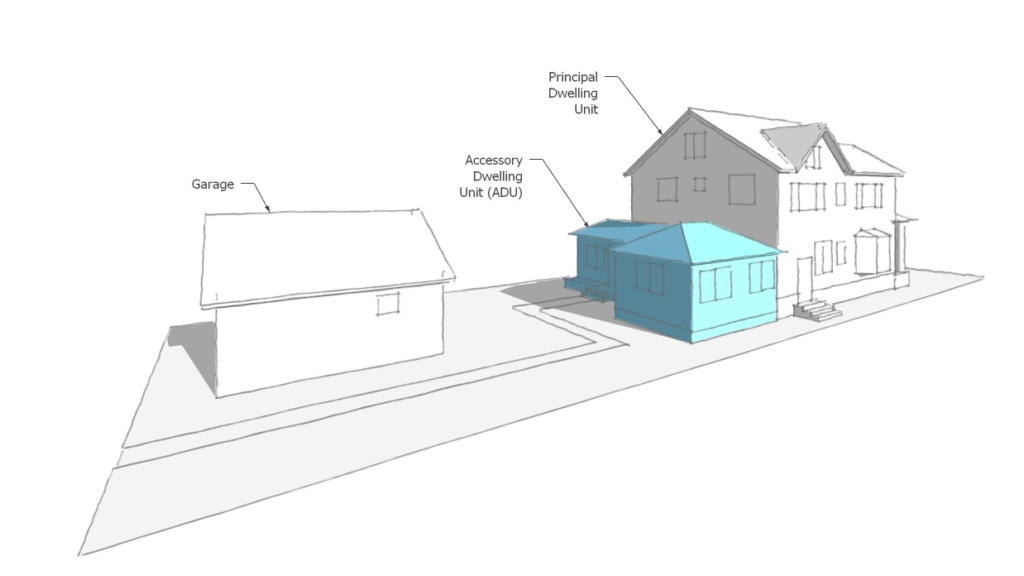
Attached ADUs have become increasingly popular in San Diego in recent years.
An attached ADU in San Diego is a separate living unit that is physically connected to the primary residence.
It can be part of the main house, connected through a breezeway, garage, or other structure, or even built on top of the main house.
Attached ADUs typically share a common wall with the main residence, but they can also be completely separate units with their own entrances and utilities.
Attached ADUs are a popular option for homeowners in San Diego for a number of reasons.
They can be used to provide additional living space for extended family members, aging parents, or adult children who want to live independently but still be close to home.
Attached ADUs can also be rented out to generate additional income.
Why building an attached ADUs in San Diego:
- Convenience: Attached ADUs are located on the same property as the main residence, which makes them convenient for both residents. Residents can easily access shared amenities, such as the backyard, laundry room, and kitchen.
- Privacy: Attached ADUs typically have their own entrance and utilities, so residents have their own space and privacy.
- Value: Attached ADUs can add significant value to a property. In San Diego’s competitive housing market, attached ADUs can make a property more attractive to buyers.
- Flexibility: Attached ADUs can be used for a variety of purposes, such as accommodating guests, aging parents, adult children, or renters.
If you are considering building an attached ADU in San Diego, there are a few things you need to keep in mind.
First, you will need to check with your local zoning regulations (in our case, San Diego) to make sure that ADUs are allowed in your area.
Second, you will need to obtain a building permit from San Diego.
Third, you will need to work with a qualified contractor (like us – Sheiner Construction) to design and build your ADU.
Overall, attached ADUs can be a great way to add value to your property, generate additional income, and create flexible living arrangements in San Diego.
How to Get Started with an Attached ADU in San Diego?
If the idea of building an attached ADU in San Diego intrigues you, the first step is to delve into the local regulations.
Each city has its unique requirements for ADUs, so ensure your project aligns with the relevant codes and ordinances.
Next, let your imagination run wild and design your ADU.
At Sheiner Construction San Diego we ask for those ideas in order to make them a reality, therefore, this step is important.
Remember to factor in the needs of all potential residents, ensuring that it accommodates everyone.
For instance, if you plan to rent it out, make sure it’s accessible by all categories, including injured persons.
Once you have a design, the next adventure is obtaining a building permit from San Diego municipality.
This process can be intricate, so collaborating with a skilled contractor, like Sheiner Construction, is crucial to ensure everything goes smoothly.
Examples of Atached ADUs in San Diego
Attached accessory dwelling units (ADUs) are a popular way to add additional living space to a property in San Diego. They can be used for a variety of purposes, such as accommodating guests, aging parents, adult children, or renters. Attached ADUs can also be a great way to generate additional income.
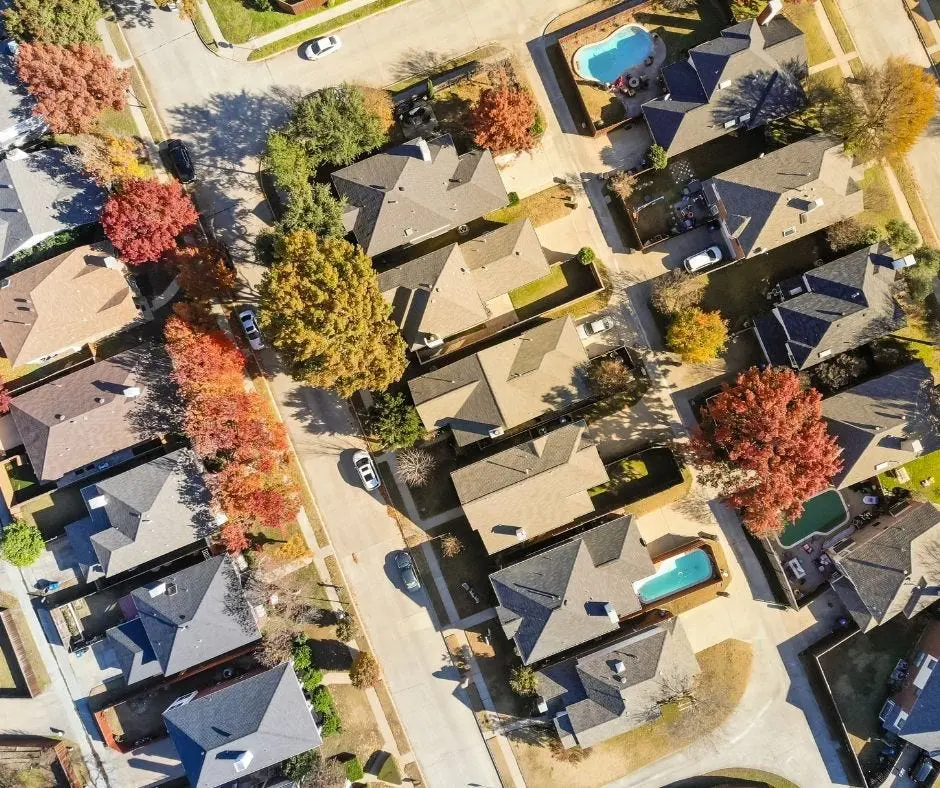
Accessory Dwelling Units (ADUs) have become a versatile solution for homeowners in San Diego seeking additional living space.
Among the myriad options available, Attached ADUs offer a unique blend of convenience and integration with the existing primary residence.
These attached structures can take various forms, showcasing innovative designs that seamlessly connect to the main dwelling.
From converted garages to second-story extensions and interior access points, San Diego homeowners have embraced diverse approaches to create attached ADUs that not only meet practical needs but also contribute to the architectural aesthetics of their properties.
Let’s explore attached ADU examples from San Diego that illuminate the creativity and functionality of our clients..
In-law Suite | Modern Attached ADU
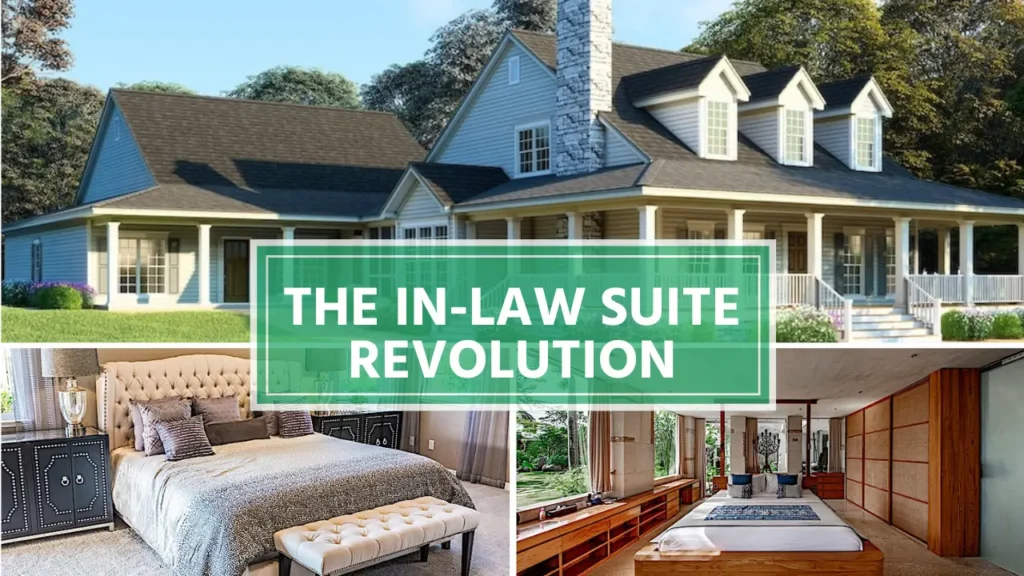
Picture an in-law suite – a unique type of attached ADU crafted for multigenerational living.
In-law suites typically feature a bedroom, bathroom, and living area, offering residents their own space while staying close to the main house. It’s a harmonious blend of independence and proximity.
How is an In-Law Suite? A Harmonious Blend of Independence, and Proximity in-law suite is a unique type of attached dwelling unit (ADU) that is designed for multigenerational living.
Typically featuring a bedroom, bathroom, and living area, in-law suites offer residents their own space while staying close to the main house.
This harmonious blend of independence and proximity makes in-law suites a popular choice for families with aging parents, adult children, or other loved ones who need their own space but also want to be close to family.
Benefits of In-Law Suites Increased flexibility: In-law suites can be used for a variety of purposes, such as accommodating aging parents, adult children, or guests.
This flexibility can be invaluable for families as their needs change over time.
Reduced stress: In-law suites can help to reduce stress for both the main house residents and the in-law suite occupants.
By providing everyone with their own space, in-law suites can help to prevent conflict and promote harmony within the household.
Enhanced independence: In-law suites can help to promote independence for aging parents or adult children.
By having their own space, in-law suite occupants can maintain their own routines and make their own decisions.
Reduced costs: In-law suites can help to reduce costs for families. For example, families can save money on childcare costs if their grandparents live in an in-law suite. Additionally, families may be eligible for tax breaks if they rent out their in-law suite.
Designing an In-Law Suite
When designing an in-law suite, it is important to consider the needs of the occupants.
For example, if the occupants are aging parents, the in-law suite should be designed with accessibility in mind.
This may include features such as wider doorways, grab bars in the bathroom, and a ramp at the entrance.
In addition to accessibility, it is also important to consider the occupants’ privacy and comfort. The in-law suite should have its own separate entrance and exit, as well as its own kitchen and bathroom.
This will allow the occupants to come and go as they please and maintain their own independence.
Finally, it is important to consider the overall design of the in-law suite.
The in-law suite should be a comfortable and inviting space that the occupants will enjoy spending time in.
Choose colors and finishes that are warm and welcoming, and furnish the space with comfortable furniture and amenities.
In-law suites can be a valuable addition to any home.
By providing residents with their own space while staying close to the main house, in-law suites offer a harmonious blend of independence and proximity.
If you are considering adding an in-law suite to your home, be sure to carefully consider the needs of the occupants and design a space that is both functional and inviting.
Converted Garage:
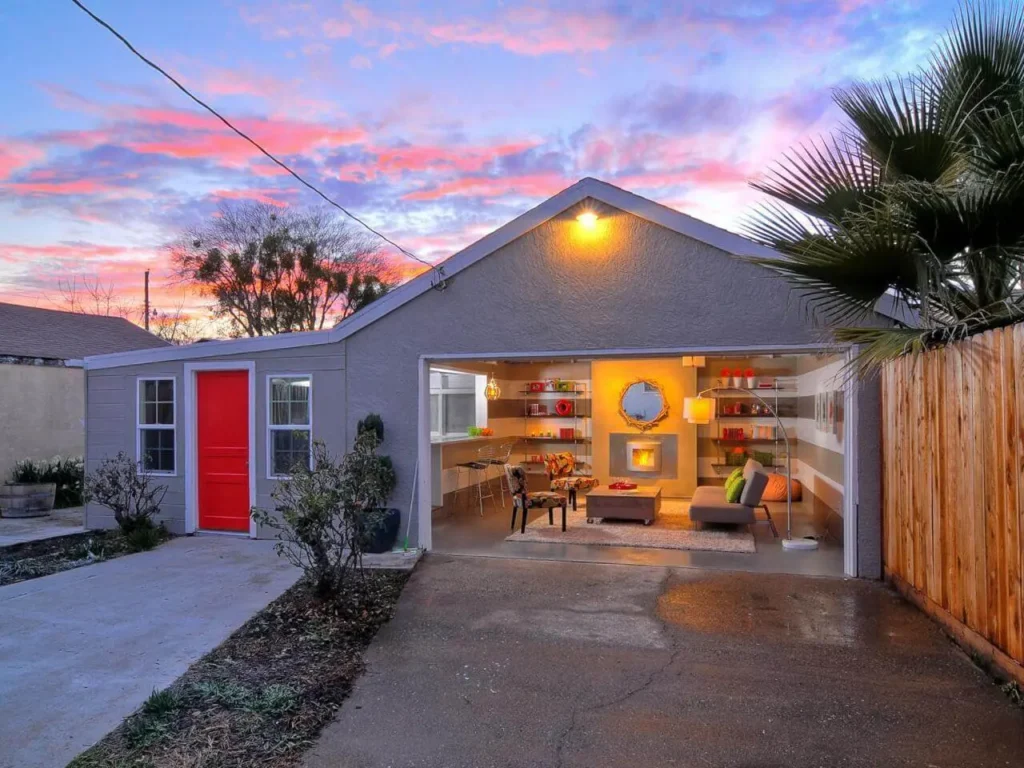
Some homeowners opt for a transformation – converting their garage into an attached ADU.
It’s a cost-effective way to expand your living space without constructing a new building.
Transformed garage ADUs are incredibly versatile and can serve as guest houses, home offices, or rental properties.
Converted Garages: A Versatile and Cost-Effective Attached ADU Option
Converting a garage into an attached dwelling unit (ADU) is a popular and cost-effective way to add living space to your home.
Garages are typically well-insulated and have a foundation, making them a good starting point for an ADU conversion.
Additionally, garage conversions can be completed in a relatively short timeframe, which can minimize disruption to your daily life.
There are a few different ways to convert a garage into an ADU.
One option is to simply add insulation and drywall to the garage walls and ceiling.
You can also add new windows and doors, as well as a kitchenette and bathroom.
If you have a large garage, you may be able to divide it into two separate ADUs.
Another option is to build a second story on top of your garage.
This can be a good option if you have limited space on your lot.
When building a second story ADU, it is important to make sure that the foundation of your garage can support the additional weight.
No matter which approach you choose, converting your garage into an ADU can be a great way to add value to your home and create additional living space.
Second-Story Attached ADU in San Diego
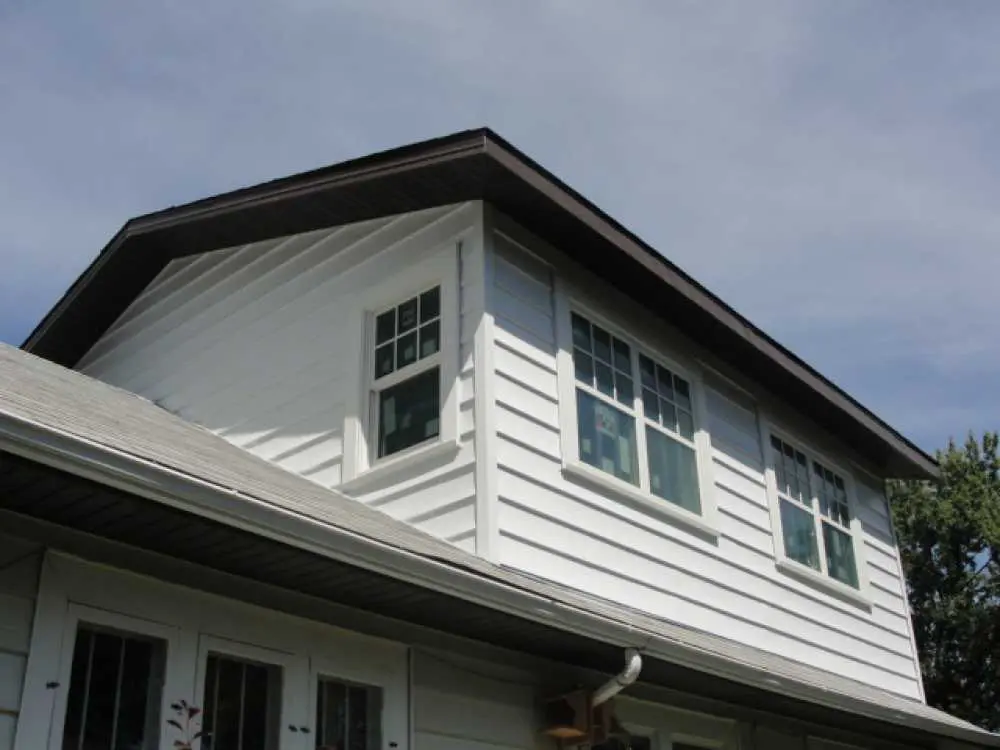
If your property boasts a spacious backyard, imagine adding a second story to your main house and upgrading it into an attached ADU.
This innovative approach increases your living space without sacrificing yard space.
Second-story ADUs often come with a private entrance and a balcony, offering residents their own private oasis.
Second-story ADUs can add significant value to your property.
Additional income: Renting out your second-story ADU can generate a steady stream of additional income.
Flexibility: Second-story ADUs can be used for a variety of purposes, such as accommodating guests, housing extended family members, or renting out to tenants.
Privacy: Second-story ADUs offer residents their own private space, with a private entrance and balcony.
If you have a spacious backyard, adding a second-story addition to your main house and converting it into an attached dwelling unit (ADU) is an innovative way to increase your living space without sacrificing yard space.
Second-story ADUs often come with a private entrance and a balcony, offering residents their own private oasis.
Benefits of Second-Story ADUs There are a number of benefits to adding a second-story addition ADU, including:
Before you start adding a second-story addition ADU to your home, there are a few things you need to consider.
Local zoning regulations: Zoning regulations vary from city to city, so it is important to check with your local zoning office to make sure that a second-story ADU is allowed on your property.
Permits: In most cases, you will need to obtain a permit from San Diego building department to add a second-story attached ADU to your home.
Budget: It is important to set a budget for your second-story addition ADU project and stick to it.
Second-story ADUs can range in price from tens of thousands of dollars to hundreds of thousands of dollars, depending on the size and complexity of the project.
Design Considerations: When designing your second-story attached ADU, there are a few things you need to keep in mind: Access: Make sure that the ADU has its own private entrance and exit.
This will allow the occupants to come and go as they please without disturbing the main house residents.
Privacy: Make sure that the ADU is located in a secluded area of the backyard.
This will help to ensure the privacy of the ADU occupants.
Views: If possible, try to design the attached ADU so that it has views of the backyard or surrounding area.
This will make the ADU more appealing to guests, extended family members, or tenants.
Adding a second-story addition ADU to your home is a great way to increase your living space and add value to your property.
Second-story ADUs are also a versatile option that can be used for a variety of purposes.
If you are considering adding a second-story attached ADU to your San Diego home, be sure to check with local zoning office and obtain the necessary permits.
Or you can check with your contractor about all of these.
Casitas
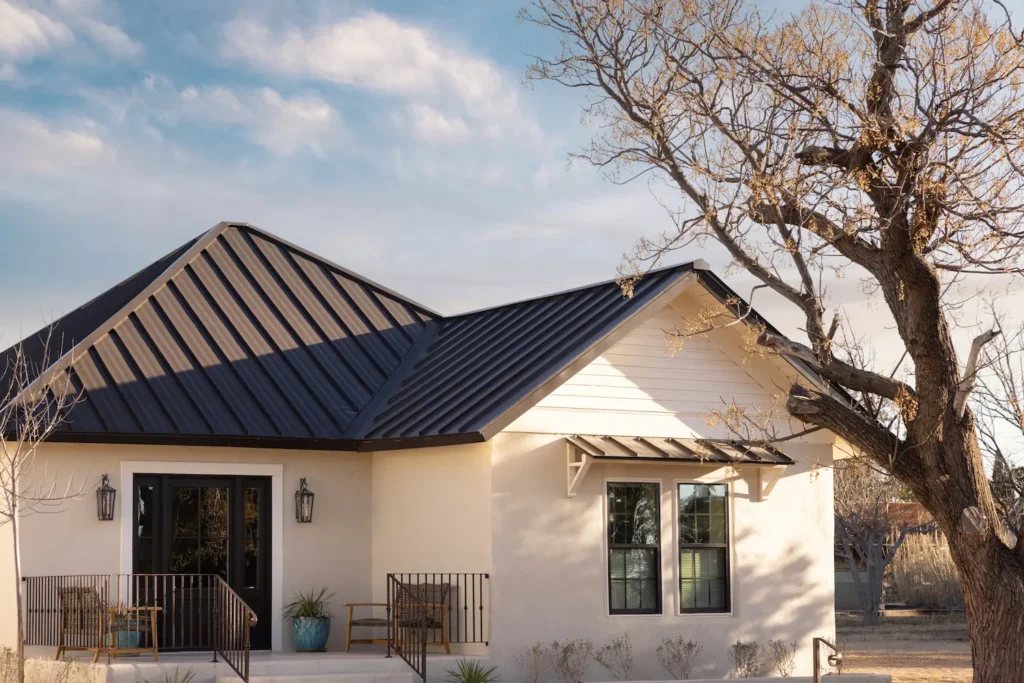
Casitas are a type of attached ADU that is popular in San Diego.
They are typically small, one- or two -bedroom units that are located in the backyard of the main house.
Casitas often have their own entrance and kitchen, making them ideal for guests or extended family members.
Casitas can also be used for a variety of other purposes, such as a home office, rental property, or even a personal retreat.
With their own private space, casitas can offer residents the best of both worlds: the convenience of living close to family and friends, with the privacy and independence of having their own home.
Benefits of having an Attached ADU in San Diego
Attached accessory dwelling units (ADUs), also known as granny flats, are becoming increasingly popular in San Diego. ADUs are small, self-contained living spaces that are attached to a single-family home. They can be used for a variety of purposes, including housing extended family members, renting out to tenants, or as a home office or studio.

Increased property value: Attached ADUs can add significant value to a property.
In fact, studies have shown that homes with attached ADUs sell for an average of 51% more than those without.
Additional income: Attached ADUs can be rented out to tenants, providing homeowners with a steady stream of additional income.
This can be especially helpful for homeowners who are looking to offset their mortgage payments or finance other expenses.
Flexible living arrangements: Attached ADUs can be used for a variety of purposes, such as accommodating elderly parents, adult children, or guests.
They can also be used as a home office, studio, or rental property. Reduced energy costs: Attached ADUs can help homeowners save money on energy costs by sharing resources with the main house, such as heating and cooling systems.
Increased sustainability: Attached ADUs can help to reduce a household’s carbon footprint by creating more efficient use of land and resources. In addition to the above benefits, attached ADUs can also offer a number of unique advantages that are specific to San Diego.
For example, many San Diego homeowners have spacious yards that are underutilized.
Attached ADUs can help to transform this unused space into a valuable asset.
Additionally, the San Diego housing market is highly competitive, making it difficult and expensive to find rental housing.
Attached ADUs can provide much-needed housing options for the San Diego community, while also generating additional income for homeowners.
Overall, attached ADUs offer a number of significant benefits for San Diego homeowners.
If you are considering adding an attached ADU to your home, be sure to contact a qualified contractor or builder to discuss your options.
Attached ADU Advantages in San Diego
In addition to these general benefits, attached ADUs also offer a number of unique advantages that are specific to San Diego. For example, many San Diego homeowners have spacious yards that are underutilized. Attached ADUs can help to transform this unused space into a valuable asset.

Maximizing Property Use with an Attached ADU in San Diego
With the rising cost of housing in San Diego, many homeowners are looking for ways to maximize the use of their property.
One way to do this is to build an attached accessory dwelling unit (ADU). ADUs are small, self-contained living units that can be attached to the main house or built on a separate foundation on the same lot.
ADUs offer a number of benefits for homeowners, including the ability to generate additional income, accommodate extended family members, or provide a private space for guests or home offices.
But one of the most significant benefits of ADUs is their ability to maximize property use.
San Diego homeowners often have spacious yards that are underutilized.
Building an attached ADU in this unused space can transform it into a valuable asset, increasing the overall value of your property.
For example, a recent study by the National Association of Realtors found that homes with ADUs sold for an average of 35% more than homes without ADUs.
This is because ADUs add additional living space to your property, which is a highly desirable feature for buyers.
In addition to increasing property value, attached ADUs can also help you to optimize the use of your land.
By building an attached ADU, you can create a more functional and efficient use of your space.
For example, you could use the ADU as a rental property to generate additional income, or you could use it to accommodate extended family members who need to be close by.
Overall, building an attached ADU is a strategic investment for San Diego homeowners who are looking to maximize the use of their property and increase its overall value.
Maximize the use of your attached ADU in San Diego:
Design the attached ADU to be multi-functional.
For example, you could design the ADU to have a separate entrance and kitchenette, so that it can be used as a rental property or a home office.
Choose finishes and materials that are durable and easy to maintain.
This will help to minimize the time and money you spend on maintenance.
Consider adding a private patio or balcony to the ADU.
This will give the occupants their own outdoor space to enjoy.
Stage the ADU attractively if you plan to rent it out. This will help you to attract tenants and command a higher rent price.
By following these tips, you can maximize the use of your attached ADU and reap all of the benefits that it has to offer.
Additional Rental Income with an Attached ADU in San Diego
The San Diego housing market is highly competitive, making it difficult and expensive to find rental housing.
This makes renting out an attached ADU a lucrative revenue source for homeowners.
According to a recent study by Rent.com, the average rent for a one-bedroom apartment in San Diego is $2,800 per month (at the moment of writing).
This means that homeowners could generate an additional $2,800 per month by renting out their attached ADU.
Many homeowners use this income to offset their mortgage payments or finance other expenses.
For example, a homeowner could use the rental income to pay for their property taxes, homeowner’s insurance, or utilities.
This can provide homeowners with significant financial stability and peace of mind.
In addition to the financial benefits, renting out an attached ADU can also be a rewarding experience.
It can be a great way to help meet the housing needs of your community and connect with new people.
Tips for renting out your attached ADU in San Diego:
Price your ADU competitively.
- Consider the size, location, and amenities of your attached ADU when setting a rent price.
- You can also research rental prices for similar ADUs in your area.
- Market your ADU to the right tenants.
- Consider who would be most interested in renting your ADU.
For example, you could market your attached ADU to professionals, students, or families.
Screen your tenants carefully.
- Before renting your ADU to anyone, be sure to screen them carefully.
- This includes checking their credit history, employment history, and rental references.
- Hire a property manager. If you don’t have the time or expertise to manage your rental property yourself, you may want to consider hiring a property manager. A property manager can take care of all the aspects of managing your rental property, including finding tenants, collecting rent, and handling maintenance issues.
Tips for renting out your attached ADU in San Diego:
- Make sure that your ADU is permitted. In San Diego, ADUs must be permitted by the city before they can be rented out. You can contact the City of San Diego Development Services Department to learn more about the permitting process.
- Comply with all applicable laws and regulations. There are a number of laws and regulations that apply to rental properties in San Diego.
- Be sure to familiarize yourself with these laws and regulations before renting out your ADU.
- Provide a safe and habitable living space for your tenants.
- As a landlord, you are responsible for providing a safe and habitable living space for your tenants. This includes making sure that the ADU is in good repair and that it has all of the necessary amenities, such as heating, cooling, and running water.
Design considerations for attached ADUs in San Diego
In addition to these general benefits, attached ADUs also offer a number of unique advantages that are specific to San Diego. For example, many San Diego homeowners have spacious yards that are underutilized. Attached ADUs can help to transform this unused space into a valuable asset.
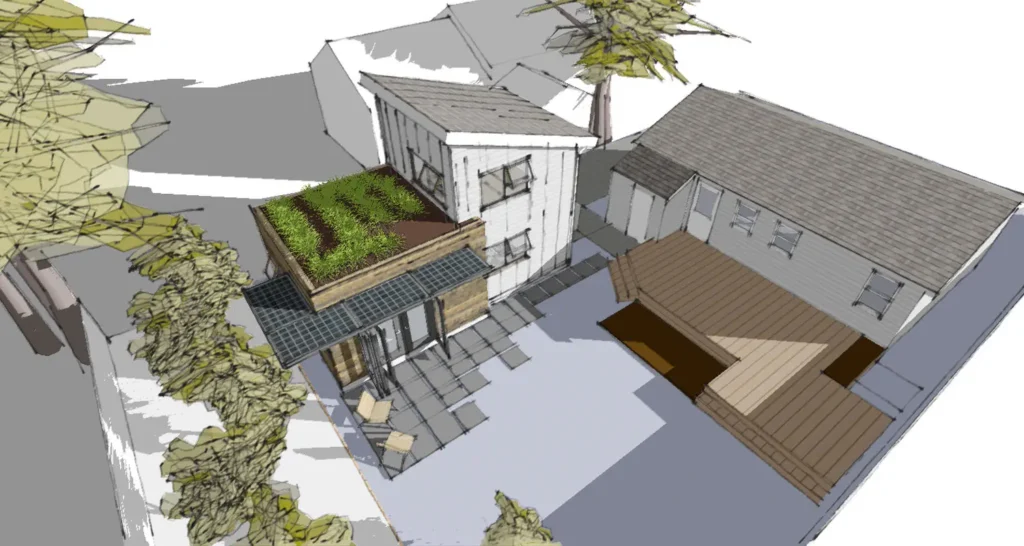
Size and Layout of Attached ADUs
When planning the size and layout of your attached ADU, meticulous consideration is essential to maximize space utility.
It’s vital to align your design with the intended purpose of the unit and the occupants’ requirements.
Whether it’s for rental, guests, or multi-generational living, understanding its function is the first step in creating a well-thought-out layout.
At Sheiner Construction San Diego, we ask a lot of questions before we even start.
That’s because we need the understand every aspect of your attached ADU, and the size and layout will be based on your vision.
Space-efficient design tips for attached ADUs
Leverage vertical space: Install built-in shelves, cabinets, and Murphy beds to maximize storage and living areas. For example, you can install floating shelves above the kitchen counter to store dishes and glassware without taking up valuable counter space. Or, you can install a Murphy bed in the living room that folds up into the wall when not in use, creating more space for activities and entertaining.
Opt for multi-purpose furniture: Choose furniture that can serve multiple purposes, such as coffee tables with built-in storage or sofa beds. This will help you to save space and create a more functional living space. For example, a coffee table with built-in storage can be used to store books, magazines, and other items, freeing up space on your shelves and countertops. Or, a sofa bed can be used as a couch during the day and a bed at night, eliminating the need for a separate guest room.
Embrace open floor plans: Open floor plans create a more spacious and inviting atmosphere. In an attached ADU, this can be especially important, as it can help to make the unit feel larger and more open. When designing an open floor plan, be sure to consider the placement of furniture and other elements to create distinct areas for living, cooking, and dining.
Utilaze natural light: Natural light can help to brighten up the space and reduce energy costs. When designing your attached ADU, try to incorporate as much natural light as possible. This can be done by installing large windows and skylights, or by placing the unit in a part of the yard that receives plenty of sunlight.
Architectural Style of Attached ADU
Choosing the right architectural style for your attached ADU is crucial to harmonize with your primary residence and the neighborhood’s character.
If you have a traditional home, a design that seamlessly blends with the existing architecture is advisable.
Conversely, for modern homes, a more contemporary style may be preferable.
Our tips for choosing an architectural style for your attached ADU
Consider the overall style of your neighborhood.
Do most of the homes have a similar architectural style?
For example, if you live in a neighborhood with mostly traditional homes, you may want to choose a design that is consistent with that style.
Think about the style of your primary residence.
Do you want the ADU to match or contrast the main house?
For example, if you have a traditional home, you may want to choose an ADU with a traditional design to create a cohesive look.
Or, you may want to choose a more contemporary ADU to contrast the main house and create a more unique and eye-catching look.
Consider the intended use of the ADU.
A rental property may require a different architectural style than a guest house or multi-generational home.
For example, a rental property may need to be more durable and easy to maintain, while a guest house or multi-generational home may be more focused on comfort and livability.
Examples of Architectural Styles for Attached ADUs
Traditional
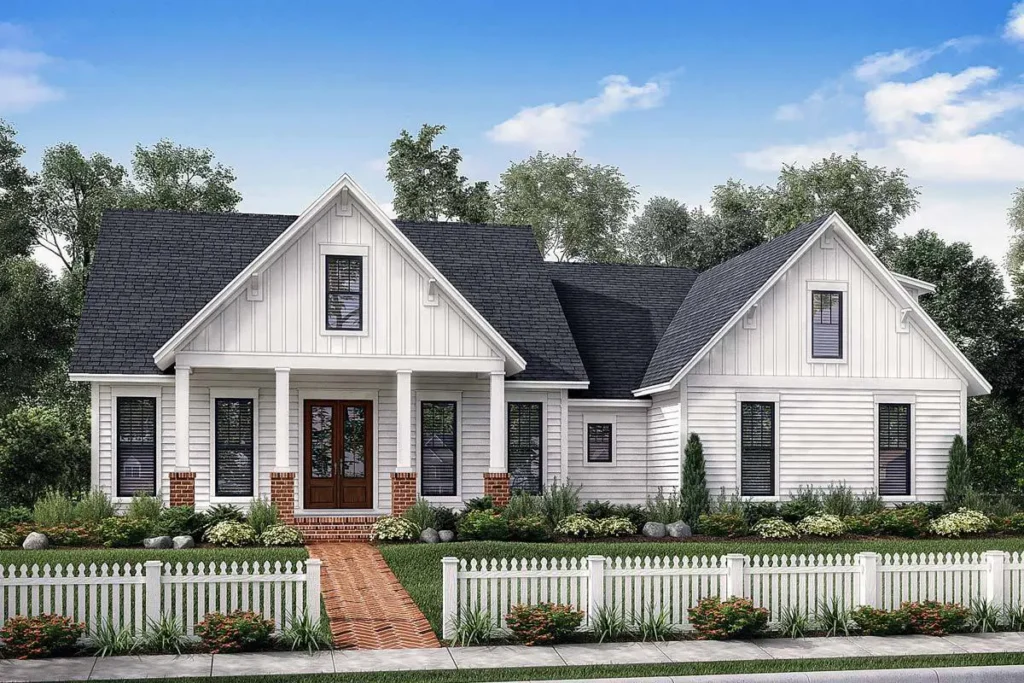
When exploring architectural styles for Attached Accessory Dwelling Units (ADUs), the Traditional style stands out for its timeless charm and classic aesthetics.
Traditional ADUs seamlessly integrate with the main dwelling, showcasing elements such as pitched roofs, dormer windows, and intricate detailing.
This style often features a symmetrical façade, creating a harmonious visual appeal
The beauty of Traditional ADUs lies in their ability to complement various residential settings.
Elements like gabled roofs and porch columns contribute to a warm and inviting atmosphere.
Additionally, Traditional ADUs often incorporate materials like brick or clapboard siding, enhancing the overall character while maintaining a sense of familiarity with the primary residence.
While functionality remains a priority, the Traditional style for Attached ADUs emphasizes craftsmanship and heritage.
Homeowners who appreciate the enduring elegance of traditional architecture may find this style particularly appealing, creating a cohesive and aesthetically pleasing property.
Craftsman House
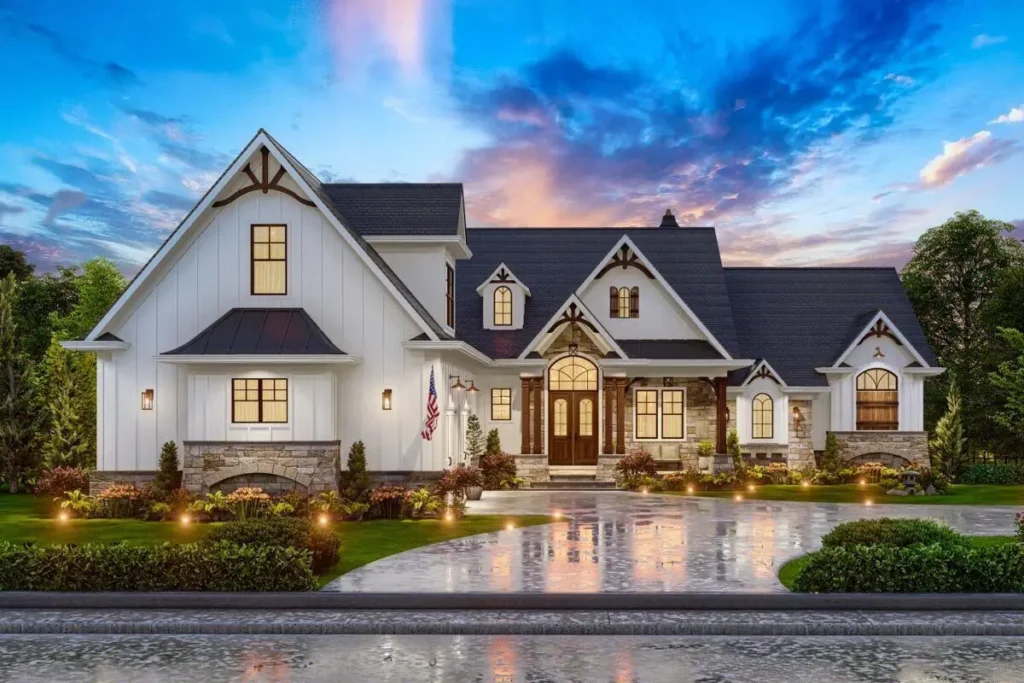
Craftsman-style Attached Accessory Dwelling Units (ADUs) bring a touch of artistry and craftsmanship to residential architecture.
Drawing inspiration from the Arts and Crafts movement, these ADUs showcase distinctive features that enhance curb appeal and functionality.
Craftsman-style ADUs often boast low-pitched roofs with exposed rafters, creating a cozy and inviting atmosphere.
The front porch, supported by tapered columns, adds a charming outdoor space, fostering a sense of community.
Utilizing natural materials like wood and stone, Craftsman ADUs blend seamlessly with the surrounding environment, creating a harmonious aesthetic.
Intricate detailing is a hallmark of Craftsman architecture.
Gabled roofs with decorative brackets, overhanging eaves, and double-hung windows contribute to the unique charm of Craftsman-style ADUs.
The interior often reflects an open floor plan, emphasizing simplicity and functionality.
Craftsman ADUs cater to individuals who appreciate a blend of form and function.
These structures prioritize handcrafted details, creating a timeless appeal that resonates with a diverse range of homeowners.
Contemporany House
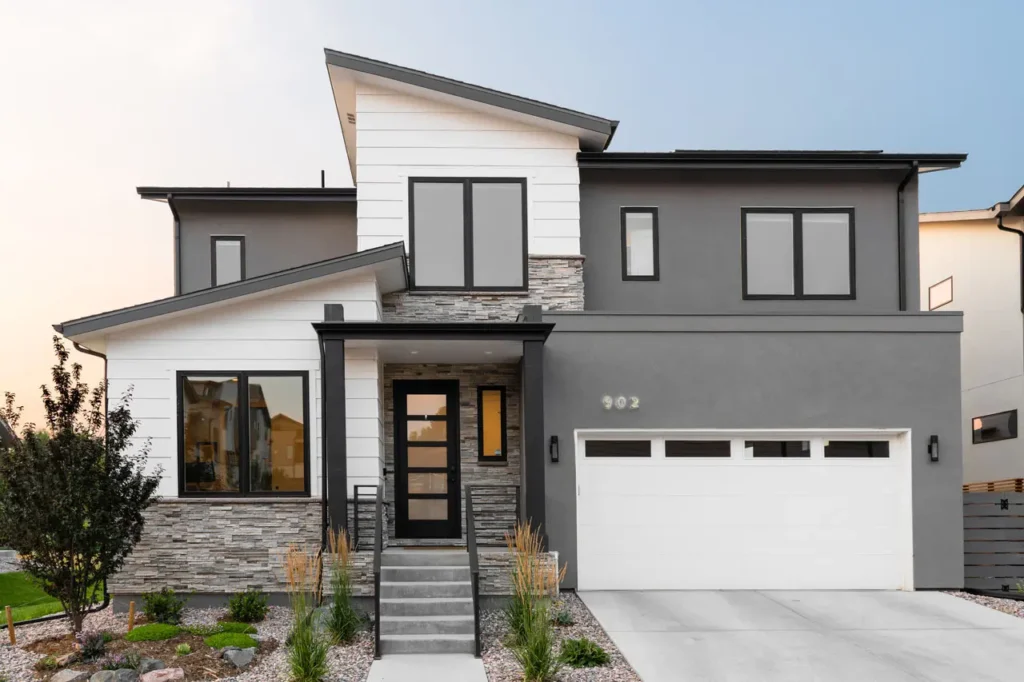
Contemporary-style Attached Accessory Dwelling Units (ADUs) exemplify modern architectural trends, offering a blend of innovation and functionality.
Characterized by clean lines, open spaces, and an emphasis on energy efficiency, these ADUs cater to individuals seeking a sleek and sophisticated living space.
One defining feature of Contemporary ADUs is the use of large windows and glass elements, allowing abundant natural light to fill the interior.
This architectural choice not only creates a visually appealing space but also promotes a connection with the surrounding environment.
Contemporary ADUs often incorporate asymmetrical designs, showcasing creativity and breaking away from traditional symmetry.
Flat or low-pitched roofs add to the modern aesthetic, providing an opportunity for rooftop gardens or solar panels, aligning with sustainable living practices.
The interior of Contemporary ADUs tends to prioritize open floor plans, eliminating unnecessary partitions and fostering a sense of spaciousness.
High-quality materials like steel, concrete, and glass contribute to a minimalist yet luxurious atmosphere.
The flexibility of Contemporary architecture allows homeowners to customize ADUs according to their preferences, embracing the latest design principles.
Whether nestled in urban landscapes or suburban neighborhoods, Contemporary ADUs make a bold statement, reflecting the spirit of the present.
Modern House Attached Adu
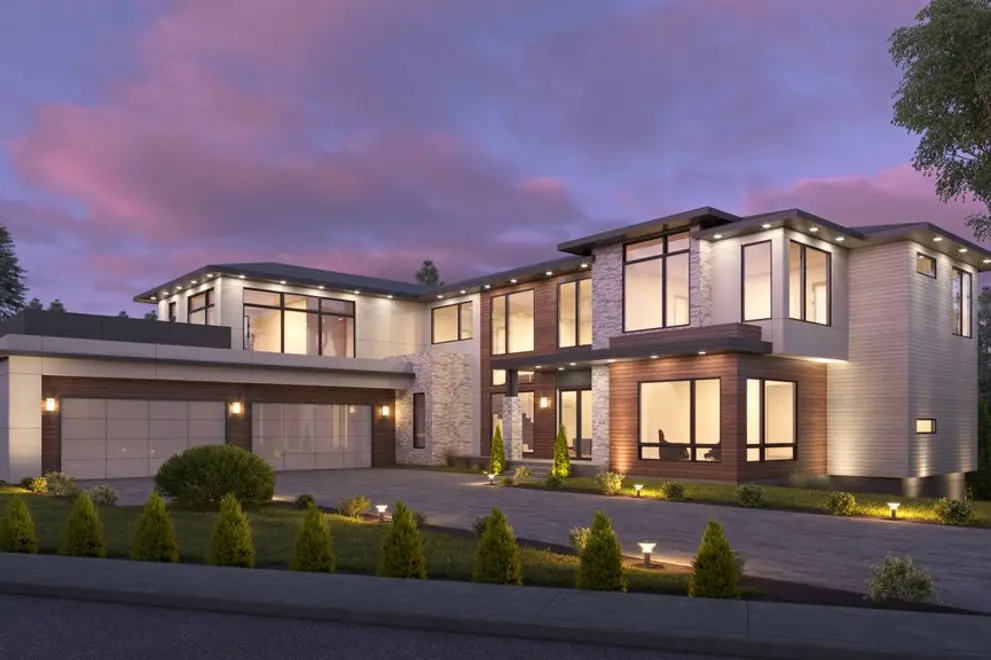
Embracing the principles of sleek design and innovation, Modern House Attached Accessory Dwelling Units (ADUs) redefine contemporary living.
Characterized by a harmonious blend of form and function, Modern ADUs seamlessly integrate into urban and suburban landscapes.
One striking feature of Modern House Attached ADUs is their emphasis on geometric shapes and clean lines. These structures often showcase flat or shed roofs, imparting a minimalist yet sophisticated appearance.
Large windows and glass elements dominate the design, promoting an open and airy atmosphere while allowing ample natural light to flood the interior.
Modern ADUs prioritize energy efficiency and sustainable practices. Utilizing eco-friendly materials and incorporating energy-efficient technologies, these structures align with the growing trend towards environmentally conscious living. Additionally, landscaped areas and green roofs contribute to the overall sustainability of Modern House Attached ADUs.
The interior of Modern ADUs reflects a commitment to maximizing space and functionality.
Open floor plans, multifunctional furniture, and smart home technologies enhance the living experience.
Modern ADUs cater to individuals seeking a contemporary lifestyle without compromising on comfort or environmental responsibility.
Whether situated in a bustling cityscape or a suburban neighborhood, Modern House Attached ADUs make a bold architectural statement. Their adaptability, energy efficiency, and sleek aesthetics make them a popular choice for those looking to embrace the future of urban living.
Conclusion
There are many different architectural styles to choose from for your attached ADU. The best way to choose a style is to consider the overall style of your neighborhood, the style of your primary residence, and the intended use of the ADU. By choosing the right architectural style, you can create an attached ADU that complements your property and enhances the value of your home.
Attached ADU construction process
Constructing an attached Accessory Dwelling Unit (ADU) in San Diego is a rewarding yet intricate endeavor. These structures can serve as versatile living spaces, accommodating family members, generating rental income, or even providing a home office.

Plan and Design Your Attached ADU in San Diego
The first step in building an attached ADU is to plan and design your unit.
This includes envisioning the purpose, size, layout, and features of your ADU.
It is important to consider the needs of the occupants and how you plan to use the ADU.
Will it be used for rental income, to accommodate family members, or as a home office? Once you have a good understanding of your needs, you can begin to develop a design that meets them.
When designing your attached ADU, it is important to consider the following factors:
Size: The size of your ADU will depend on your needs and budget.
Keep in mind that larger ADUs will be more expensive to build and maintain. Layout: The layout of your ADU should be functional and efficient. Consider the flow of traffic and the placement of furniture and appliances. Features: What features are important to you? Do you want a full kitchen and bathroom? A separate entrance? A patio or deck?
Budget: It is important to set a budget for your ADU project and stick to it. Keep in mind that the cost of building an ADU can vary depending on the size, layout, and features of the unit.
Once you have developed a preliminary design, it is important to engage a licensed architect or ADU specialist to assist with the design process.
They can help you to refine your design, create construction plans, and obtain the necessary permits.
Obtain Building Permits for Your Attached ADU in San Diego
Once you have finalized the design for your attached ADU, you will need to submit building plans to the City of San Diego to obtain the required permits.
This process can take several weeks, so it is important to start early.
Here is an overview of the building permit process for attached ADUs in San Diego: Complete the building permit application.
The application can be found on the City of San Diego website. Submit your building plans.
The building plans must be prepared by a licensed architect or engineer.
Pay the appropriate fees. The fee for a building permit for an attached ADU is based on the size and value of the unit.
Have your plans reviewed by the City.
The City will review your building plans to ensure that they comply with all building codes and zoning regulations. Obtain the necessary permits. Once your building plans have been approved, you will be issued a building permit.
In addition to the building permit, you may also need to obtain other permits, such as a plumbing permit, electrical permit, and mechanical permit.
The City of San Diego can provide you with more information on the specific permits that you will need for your project.
Also, check out our article on ADU setbacks in San Diego. It has in-depth info about all ADU regulations.
Tips for Obtaining Building Permits for Your Attached ADU in San Diego
Start early. The building permit process can take several weeks, so it is important to start early.
This will give you enough time to complete the application, submit your building plans, and obtain all of the necessary permits before construction can begin.
Work with a qualified contractor, such as Sheiner Construction.
It is important to have your building plans prepared by a licensed architect or engineer.
This will ensure that your plans comply with all building codes and zoning regulations.
Be prepared to provide additional information.
The City of San Diego may request additional information, such as surveys, environmental studies, or traffic studies.
Be prepared to provide this information promptly in order to keep the building permit process moving forward.
Ask for help if you need it.
The City of San Diego has a number of resources available to help you with the building permit process.
You can contact the City’s Department of Development Services for assistance.
Prepare the Construction Site for Your Attached ADU in San Diego
Once you have obtained the necessary building permits, you can begin preparing the construction site for your attached ADU.
This may involve land grading, vegetation removal, and utility installation.
Land Grading Land grading is the process of leveling and preparing the land for construction.
If your property is not level, you will need to have the land graded before construction can begin.
This will ensure that your ADU is built on a solid and stable foundation.
Vegetation Removal If there is any vegetation on the construction site, it will need to be removed before construction can begin.
This includes trees, shrubs, and grass.
You may also need to remove any stumps or roots. Utility Installation If there are no utilities on the construction site, such as water, sewer, and electricity, you will need to have them installed.
This can be a complex and expensive process, so it is important to factor it into your budget.
Tips for Preparing the Construction Site for Your Attached ADU
Mark the boundaries of the construction site.
This will help to prevent accidents and ensure that the ADU is built in the correct location.
Protect any existing vegetation on your property.
If you need to remove vegetation, be sure to protect any existing trees and shrubs that you want to keep.
Be mindful of drainage. Make sure that the construction site is well-drained to prevent water from pooling around your ADU.
Obtain the necessary permits. In addition to the building permit, you may also need to obtain other permits, such as a demolition permit or a tree removal permit.
Build the Foundation and Frame for Your Attached ADU in San Diego
The foundation and frame are the structural foundation of your attached ADU and are essential to its integrity and stability.
The foundation supports the weight of the ADU and prevents it from settling.
The frame provides the skeleton of the ADU and gives it its shape.
The type of foundation and frame that you choose will depend on a number of factors, including the size and design of your ADU, the type of soil on your property, and the climate in San Diego.
Once the construction site has been prepared, the foundation and frame of the ADU can be built.
This is a complex and specialized process, so it is important to hire a licensed contractor who specializes in ADU construction.
The contractor will start by excavating the site to prepare for the foundation.
Once the foundation is in place, the contractor will start building the frame.
The frame will be built using trusses and rafters to create the roof and walls.
Once the frame is complete, the contractor will install the sheathing.
The sheathing is the exterior material of the ADU, such as plywood or siding.
Additional Tips for Building the Foundation and Frame of Your Attached ADU
Use high-quality materials.
The foundation and frame are the most important parts of your ADU, so it is important to use high-quality materials.
Hire a qualified contractor. Building a foundation and frame is a complex process, so it is important to hire a qualified contractor who specializes in ADU construction, such as Sheiner Construction.
Get permits. You may need to obtain a permit from the City of San Diego to build the foundation and frame of your ADU. Address any question to your ADU contractor.
Inspect the work. Once the foundation and frame are complete, have them inspected by a qualified inspector to ensure that they meet all building codes.
Install Electrical and Plumbing Systems
Wiring, lighting, and plumbing fixtures are essential components of any home, and your attached ADU is no exception.
These systems provide the power and water that you need to live comfortably in your ADU.
Electrical System The electrical system in your attached ADU will provide power for lighting, appliances, and other electronic devices.
When installing the electrical system, it is important to follow all building codes and regulations.
You should also hire a licensed electrician to do the work. Normally, if you have a good contractor, they will provide also with pro electritians. We, at Sheiner Construction, have professionals for each field.
Plumbing System The plumbing system in your ADU will provide water for drinking, bathing, and cooking. It will also remove wastewater from your ADU.
When installing the plumbing system, it is important to follow all building codes and regulations.
You should also hire a licensed plumber to do the work if your contractor does not have one.
Components of Electrical and Plumbing Systems for Attached ADUs
The following are some of the key components of electrical and plumbing systems for attached ADUs:
Service panel: The service panel is the main electrical panel in your ADU. It distributes power to all of the electrical outlets and appliances in your ADU.
Circuit breakers: Circuit breakers protect your electrical system from overloads and short circuits.
Wiring: Wiring is the electrical cable that carries power from the service panel to the electrical outlets and appliances in your ADU.
Lighting fixtures: Lighting fixtures provide light in your ADU.
Outlets: Outlets provide power for appliances and other electronic devices.
Plumbing system: Water main: The water main is the main pipe that supplies water to your ADU.
Water meter: The water meter measures the amount of water that is used in your ADU.
Shut-off valves: Shut-off valves allow you to turn off the water supply to your ADU in case of an emergency.
Piping: Piping is the network of pipes that distributes water to the faucets and fixtures in your ADU.
Faucets: Faucets provide water for drinking, bathing, and cooking. Fixtures: Fixtures include sinks, toilets, and showers.
Tips for Electrical and Plumbing Systems for Your Attached ADU in San Diego
Hire a qualified electrician and plumber if your contractor does not have pros in their team.
Installing electrical and plumbing systems is complex and dangerous work, so it is important to hire qualified professionals to do the job.
Follow all building codes and regulations.
Building codes and regulations are in place to ensure the safety and reliability of electrical and plumbing systems.
Make sure that your electrical and plumbing systems comply with all applicable building codes and regulations.
Use high-quality materials.
Electrical and plumbing systems are essential components of your attached ADU, so it is important to use high-quality materials.
Have your electrical and plumbing systems inspected.
Once your electrical and plumbing systems are installed, have them inspected by a qualified inspector to ensure that they meet all building codes and regulations.
Insulate Your Attached ADU in San Diego
Insulating your attached ADU is one of the most important things you can do to improve its energy efficiency and maintain a comfortable temperature year-round.
Normally, you can speak only with your ADU construction contractor, but it depends who you choose for your attached granny flat.
Insulation works by trapping heat in the winter and keeping the cool air in during the summer.
This can help to reduce your energy bills and save you money in the long run.
There are a number of different types of insulation available, but the most common types used in ADUs are:
Fiberglass insulation: Fiberglass insulation is a popular choice because it is affordable and easy to install.
It is made from glass fibers that are spun into a mat or blanket.
Fiberglass insulation can be used to insulate the walls, attic, and floors of your ADU.
Spray foam insulation: Spray foam insulation is a more expensive option, but it is also more effective. It is made from a liquid that expands and hardens when it is applied.
Spray foam insulation can be used to insulate all areas of your ADU, including the walls, attic, floors, and crawl space.
How to Insulate Your Attached ADU The best way to insulate your attached ADU is to hire a qualified contractor who specializes in insulation.
The contractor will be able to assess your ADU and recommend the best type and amount of insulation for your needs.
If you are planning to insulate your ADU yourself, there are a few things you need to keep in mind: Choose the right type of insulation.
Fiberglass insulation is a good choice for most ADUs. However, if you live in an area with extreme temperatures, you may want to consider using spray foam insulation.
Use the right amount of insulation.
The amount of insulation you need will depend on the climate in San Diego and the type of insulation you choose.
Consult a qualified contractor or insulation manufacturer to determine the right amount of insulation for your ADU.
Install the insulation properly.
Insulation is only effective if it is installed properly. Make sure to follow the manufacturer’s instructions carefully when installing insulation.
Tips for Insulating Your Attached ADU Seal all air leaks.
Air leaks can allow conditioned air to escape from your ADU, making it less energy-efficient.
Seal all air leaks around windows, doors, and other openings with caulk or weatherstripping.
Insulate the attic. The attic is one of the most important areas to insulate, especially in San Diego where the summers can be hot.
Make sure to insulate the attic floor and the rafters. Insulate the walls.
Insulating the walls will help to keep your ADU cool in the summer and warm in the winter.
You can insulate the walls from the inside or the outside. Insulate the floors. Insulating the floors will help to keep your feet warm in the winter. You can insulate the floors from the inside or the outside.
Finish the Interior
Choose durable materials.
The materials you choose for the interior of your ADU should be durable and easy to clean.
This is especially important if you plan to rent out your ADU.
Coordinate the finishes. When choosing finishes for your ADU, it is important to coordinate them with each other.
This will create a cohesive and stylish look. Don’t forget the details.
The finishing touches, such as lighting, hardware, and accessories, can make a big difference in the overall look and feel of your ADU.
Tips for a Successful Attached ADU Construction Project:
- Hire a Licensed Contractor: Selecting an experienced and licensed contractor is pivotal for a smooth construction process, from initial planning to permit acquisition and construction. If the contractor has all the pros in their team, you don’t need to have headaches with this step.
- Maintain Open Communication: Regular communication with your contractor is vital to keep the project on track and within budget.
- Prepare for Unexpected Delays: Construction projects may encounter unexpected delays due to weather or unforeseen site conditions, so remain flexible.
- Enjoy Your New ADU: Once your attached ADU is complete, you can embrace the numerous benefits it offers.

